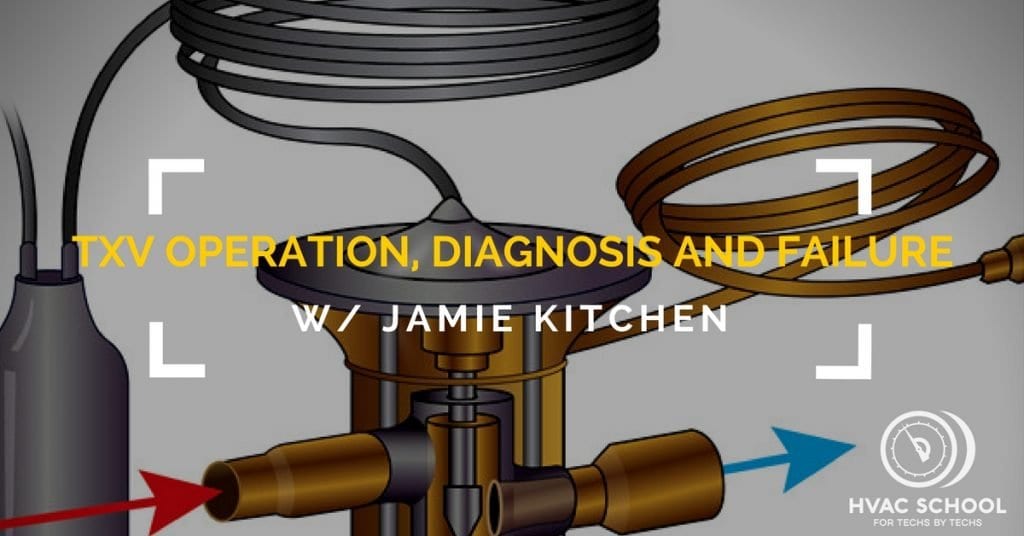TXV Operation, Diagnosis, and Failure w/ Jamie Kitchen (Podcast)

In this episode, Bryan talks with Jamie Kitchen from Danfoss about why and how thermostatic expansion valves (TXVs) fail and how they function in the first place.
As fixed orifices become a dying breed with the development of higher-efficiency systems, TXVs take over the mantle as the primary method of expansion. Expansion valves meter the flow of refrigerant by aiming for a certain suction line superheat value. Unlike a fixed orifice, which has an opening of a constant diameter, an expansion valve adjusts the opening size to the evaporator based on suction superheat readings.
TXVs have a sensing bulb, diaphragm, spring, and cap tubes. Various pressures act on these components: bulb pressure, spring pressure, and evaporator pressure. The sensing bulb picks up the suction superheat adjusts its pressure on the diaphragm based on the superheat it detects. Spring pressure and evaporator pressure act against the bulb pressure. The combination of all three pressures (bulb vs. spring + evaporator) dictates the opening of the TXV orifice into the evaporator. The bulb pressure is an opening force, and the spring and evaporator pressures are closing forces.
You can cause TXV failure by adjusting it or brazing it in improperly. When too much heat is applied to the TXV, the components inside can warp. Some TXV failures also occur due to contamination. Flowing nitrogen while brazing flushes carbon and oxygen contaminants out and reduces your risk of TXV failure later on.
Bryan and Jamie also talk about:
- TXV anatomy (powerhead, spring, etc.)
- Internal vs. external equalization
- Pressure drop across the distributor
- Subcooling and its relationship with the TXV
- Solenoid and ball valve (upstream) malfunctions
- Filter-dryer placement
- TXV assessment during commissioning
- Locating restrictions
- Residential system airflow
If you have an iPhone, subscribe to the podcast HERE, and if you have an Android phone, subscribe HERE.









Comments
To leave a comment, you need to log in.
Log In